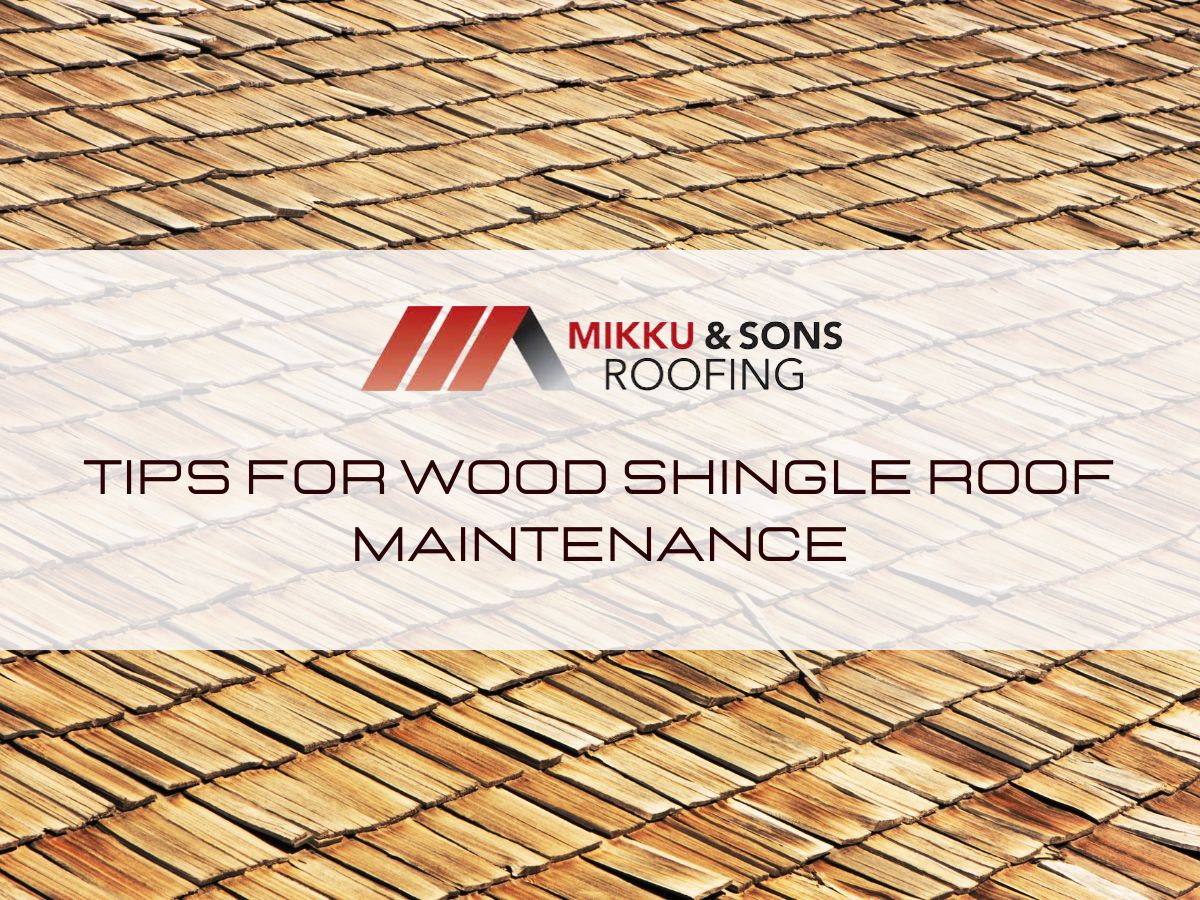

Your wood shingle roof is more than just a protective layer for your home—it's a key part of its character and curb appeal. But like any investment, it requires care to keep it looking great and performing well over the years.
If you've ever wondered how to maintain a wood shingle roof and extend its lifespan, you're not alone. Many homeowners find themselves unsure of where to start when it comes to upkeep.
The good news? Taking a few simple steps now can save you from costly repairs down the road. In this guide, we’ll walk you through eight practical tips for wood shingle roof maintenance so you can keep your roof in top shape year after year.
Scheduling regular inspections is the first step in ensuring your roof stays in good condition. Aim to inspect your roof at least twice a year, once in the spring and again in the fall. These inspections allow you to spot potential problems before they escalate into major issues. If you notice missing, cracked, or loose shingles, it's best to address them right away to prevent water damage.

Additionally, after severe weather, such as storms or heavy winds, a quick check of your roof can save you a lot of trouble later. During inspections, look out for damaged flashing, which can lead to leaks. By catching small issues early, you can avoid more expensive repairs down the road.
Debris, such as leaves, branches, and dirt, can accumulate on your roof over time, creating potential hazards. Not only can debris hold moisture, leading to mold and rot, but it can also put unnecessary weight on your roof. Regularly clearing debris from your roof will help prevent these issues from developing.
Make it a habit to check your roof for debris after storms, especially if you have nearby trees. Using a soft broom or a roof blower is an effective way to clear your roof without damaging the shingles. For homeowners with wood shingle siding, the same principle applies—keep the siding clear of dirt and debris to maintain its durability and appearance.
Overhanging branches can cause significant damage to your roof if left unchecked. Branches that scrape against your roof can wear down the shingles over time while falling branches pose a risk of puncturing the roof surface. Trimming back branches that hang over your roof will protect your shingles from unnecessary wear and tear.
It’s recommended to trim branches at least six feet away from your roof to prevent leaves and twigs from accumulating and causing damage. Regularly maintaining your landscaping in this way not only protects your roof but also minimizes the amount of debris that collects on it, making roof maintenance easier.
Your gutters play a crucial role in directing water away from your home. Clogged gutters can lead to water backing up onto your roof, which may cause leaks or water damage to the shingles. To avoid this, make sure to clean your gutters regularly, especially during the fall when leaves are most likely to clog the system.
Aim to clean your gutters at least twice a year, but more often if you have trees near your home. By ensuring your gutters are free of debris, you allow water to flow properly, protecting both your roof and your home’s foundation.
Keeping your wood shingle roof clean is essential for maintaining its appearance and longevity, but you need to be careful about how you clean it. Harsh cleaning methods can damage the shingles, leading to more problems down the line. Avoid pressure washing, as the force of the water can dislodge or crack the wood shingles.
Instead, use a soft brush or a mild detergent to gently remove dirt, moss, and algae that may accumulate on your roof. Moss and algae can trap moisture, leading to rot if left unchecked. A soft wash or gentle scrub can help clear this debris without causing damage. This is also true for wood shingle siding maintenance, where gentle cleaning methods can preserve the integrity of the material.
Wood shingles are natural materials, and like any natural product, they can benefit from extra protection. Applying a protective treatment to your wood shingle roof can help extend its lifespan by shielding it from moisture, UV rays, and pests. These treatments can come in the form of sealants, wood preservatives, or special oils designed to penetrate the wood and create a barrier against the elements.
It’s important to choose the right treatment for your specific type of wood shingles. Some treatments might add a slight tint to your roof, while others are clear. Make sure to follow the manufacturer’s instructions when applying any product to ensure that it provides the full benefits. Reapplying treatments every few years will keep your roof looking fresh and provide ongoing protection.
Over time, weather conditions and normal wear can cause cracks or other damage to your wood shingles. Addressing cracks and damage as soon as you notice them is key to preventing further issues like leaks or structural damage. Small cracks can quickly become larger, especially if water seeps into them, causing the wood to expand and contract with temperature changes.
It’s a good idea to inspect your roof regularly for any signs of damage, especially after heavy storms or harsh weather conditions. If you notice any loose, cracked, or missing shingles, make repairs as soon as possible. For minor repairs, you may be able to replace individual shingles yourself. However, if the damage is extensive, it’s best to call a professional roofer to assess the situation.
While regular DIY maintenance can go a long way in keeping your roof in good shape, nothing beats having a professional inspection at least once a year. A professional roofer has the expertise to spot potential issues that you might miss during a routine check. They can also advise on whether it’s time to replace parts of the roof or if certain sections need extra attention.
Professional maintenance doesn’t just stop at inspections. If your wood shingles need more extensive repairs, protective treatments, or deep cleaning, a professional can ensure the job is done safely and effectively. This is especially important for older roofs or those that have been exposed to extreme weather conditions. With regular professional care, your wood shingle roof can last for decades.
Maintaining a wood shingle roof may require a bit of effort, but it’s a small price to pay for preserving the beauty and longevity of your home’s exterior. By following these tips, you can ensure your roof stays strong, looks great, and performs well for years to come.
However, there's always more to learn when it comes to protecting your investment. If you're curious about more specific aspects of roof maintenance or need professional guidance, be sure to explore our other resources on roof repair, replacement, and upgrades.
